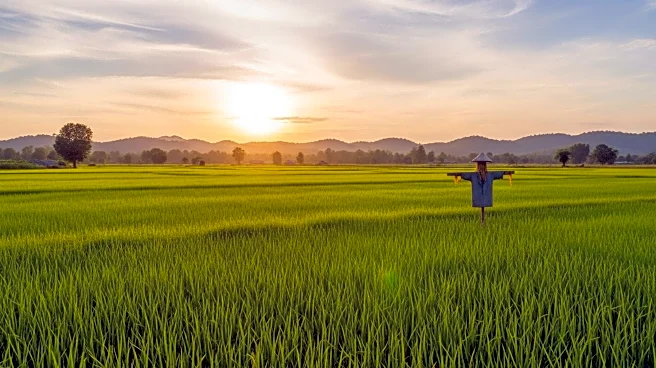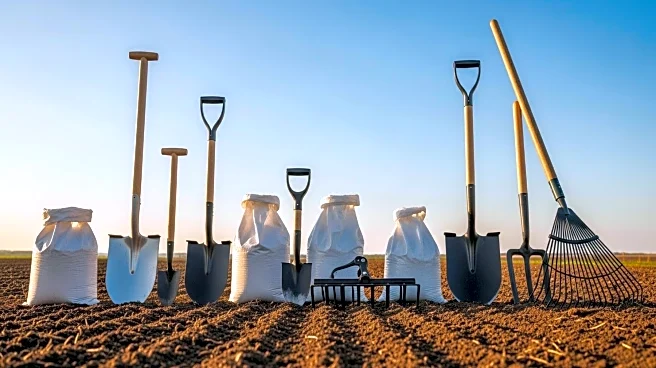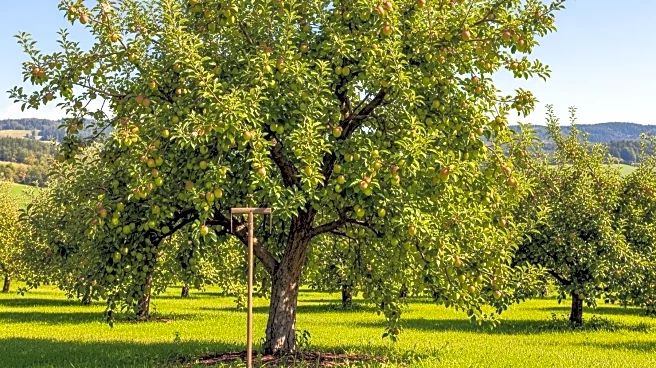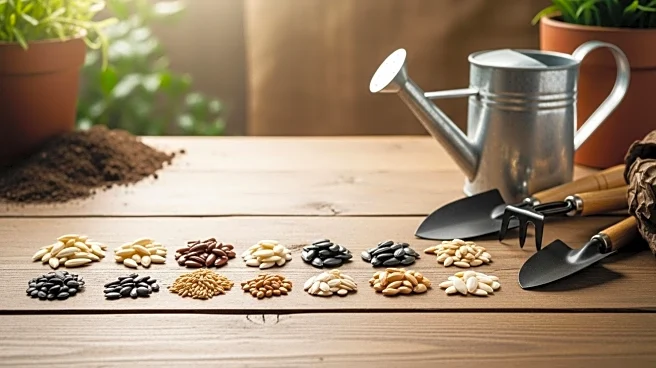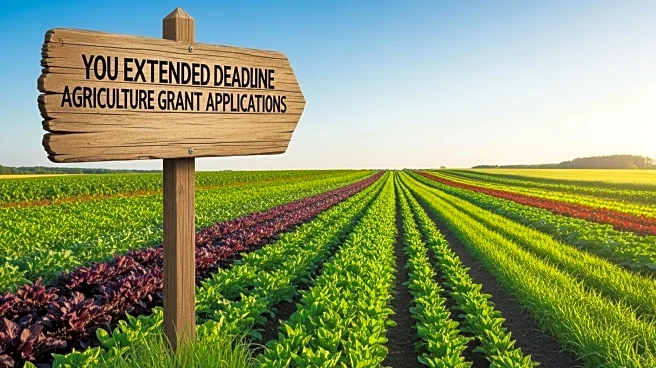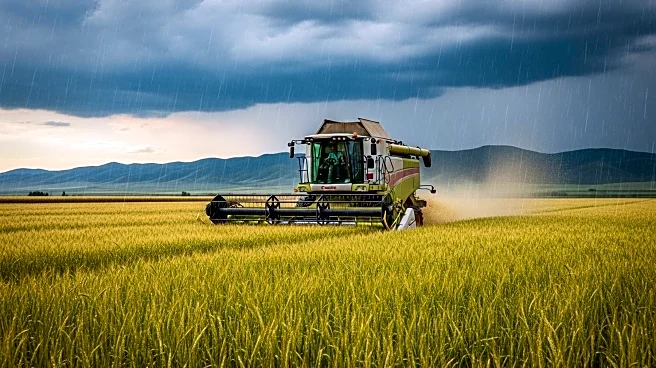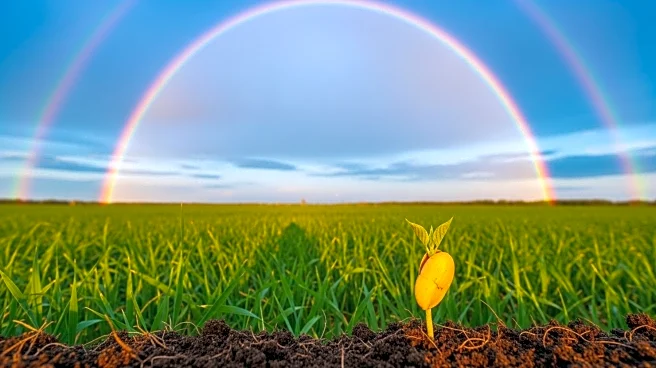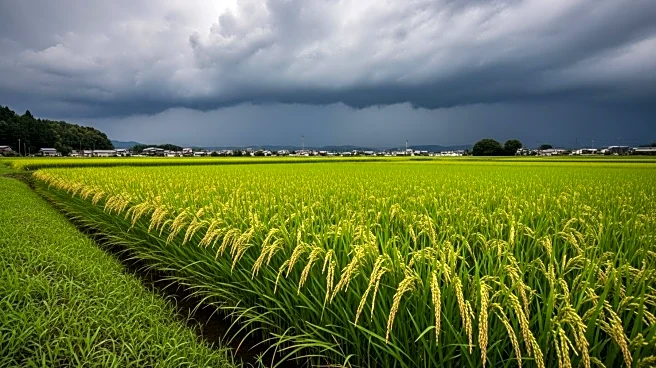What is the story about?
What's Happening?
The Department of Agriculture (DA) in the Philippines is targeting an 84% rice self-sufficiency rate by the end of 2026. Currently, the country is at a 77% self-sufficiency level. Assistant Secretary U-Nichols Manalo emphasized the importance of budget allocation to achieve this goal during a government budget hearing. The DA is requesting a P216.1 billion budget for 2026 to enhance rice production, support farmers, and improve logistics. Agriculture Secretary Francisco Tiu Laurel Jr. noted that limited funding has historically weakened the sector's contribution to the economy, despite employing a significant portion of the population.
Why It's Important?
Achieving higher rice self-sufficiency is vital for the Philippines to reduce its reliance on imports and strengthen food security. The DA's initiatives aim to boost local production, which could stabilize rice prices and support the livelihoods of farmers. Increasing self-sufficiency will also help address the agricultural trade deficit and contribute more significantly to the country's GDP. This move is crucial for the long-term sustainability of the agricultural sector and the overall economic health of the nation.
What's Next?
The DA plans to implement programs to reach a 90% rice self-sufficiency rate by 2028, contingent on receiving adequate funding. The department will focus on enhancing production techniques and supporting infrastructure to meet these targets. Continued monitoring and adjustments to the strategy will be necessary to address challenges such as climate impacts and resource allocation.
AI Generated Content
Do you find this article useful?
